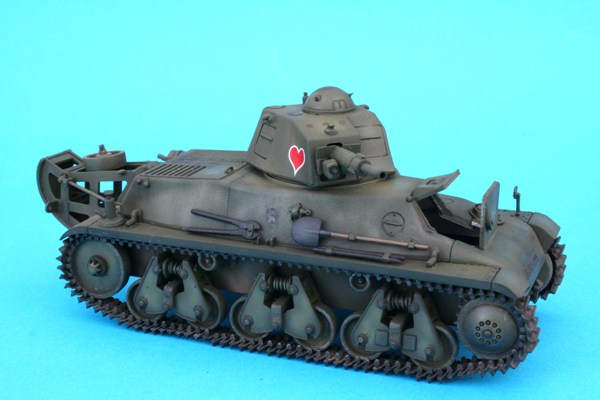Figures and vehicles
The figures used were chosen to reflect the confidence of the Germans and the bewilderment of the French while I wanted the vehicles to be typical of the period. Despite being inferior in both number and quality of their vehicles, the Germans overcame the Allies by using superior tactics. Key to this was that their vehicles benefited from the use of radios and also that their commanders kept pace with the fighting in armoured vehicles and directed the battle effectively.
The main characters in the diorama are the two Frenchmen in the process of surrendering. Of the other figures in the diorama, the Panzer officer and Military Policeman were selected for their casual and confident poses and positioned to look on in curiosity as the French give up. The Military Policeman was also included to represent the importance placed by the Germans in ensuring a good flow of traffic as the advance progressed.

The French soldiers surrendering forms the focal point of the diorama. The tanker is from the Dragon set Blitzkrieg in France while the seated French infantryman is Warriors figure (35172). Both were chosen for their look of dejection while the pose of the Dragon figure, full of confidence and authority, fitted the scene well.

A close up of the French tank Officer gives a good view of his uniform.

ZOOM - Move your mouse over image
The relative position of the onlookers watching the act of surrender can be seen.

The Sovereign 2000 German command vehicle (SdKfz 247) was included as it represented a typical command vehicle. The commander holding the map comes with the kit while the Panzer officer is a Wolf figure cut down to fit the vehicle.

While French commanders were distant from the frontline, their German equivalent travelled with their men. This gave them the ability to make faster and better decisions based on first hand knowledge of the fighting.

In taking over in Czechoslovakia, the Germans gained access to a Czech tank industry that produced good quality vehicles. Taken into German service, the PzKpfw 35(t) seen here, along with the PzKpfw 38(t), supplemented a critical shortage of medium tanks in the German army.

The Hotchkiss 40 was typical of French design. Manned by a crew of two, driver and commander, the commander had also to act as gunner and loader overburdening him. This significantly reduced the effectiveness of the fighting vehicle. The model was made from the Bronco kit having gone together well.

The two marching infantrymen from Andrea were added to add to the sense of movement that the tank on its own could not achieve.

The abandoned Hotchkiss light tank looks isolated and forlorn as it is bypassed as so many were during the campaign.

A view from the rear of the diorama shows the PzKpfw 35(t) as it rolls across the bridge.

The wooden box and abandoned Boyes anti-tank rifle were used to fill a gap in the diorama.
Steve Noble